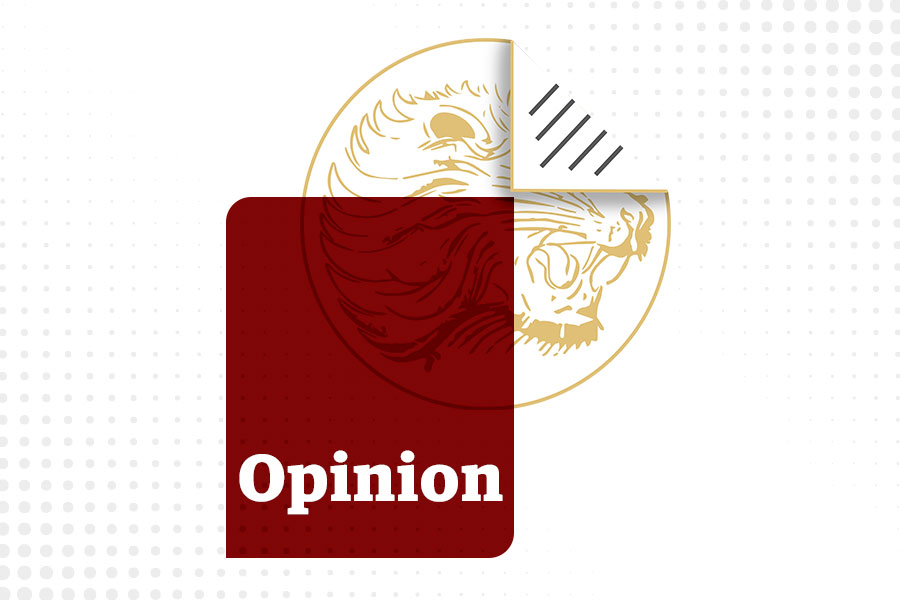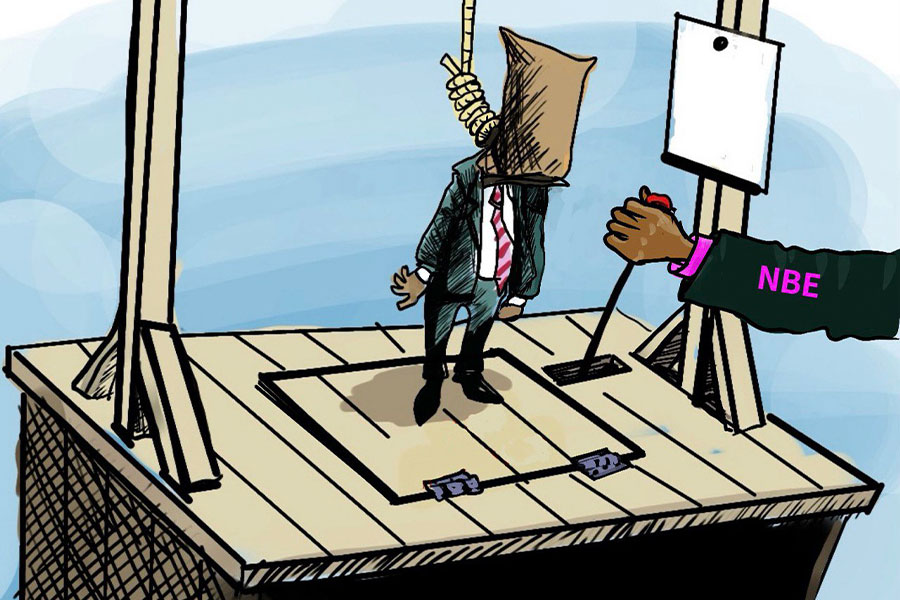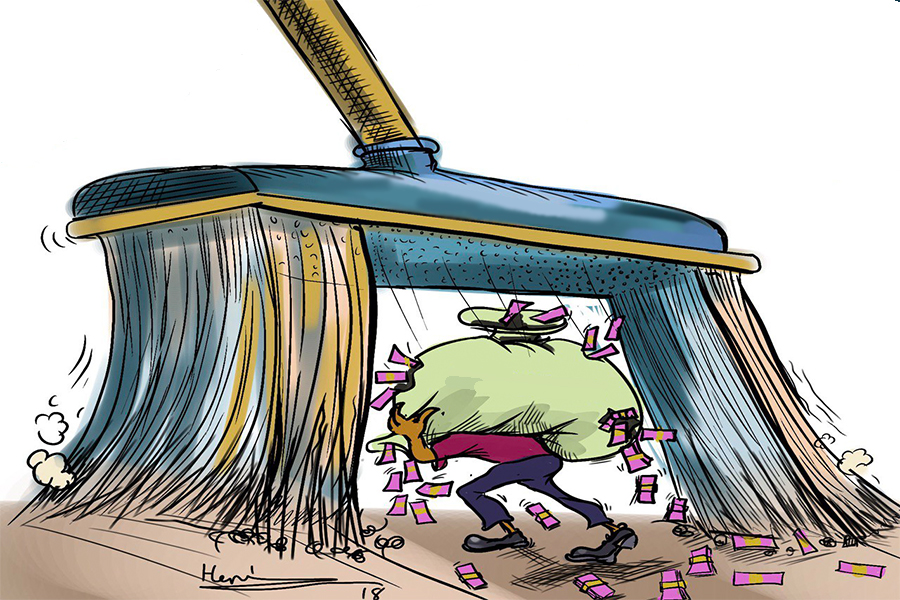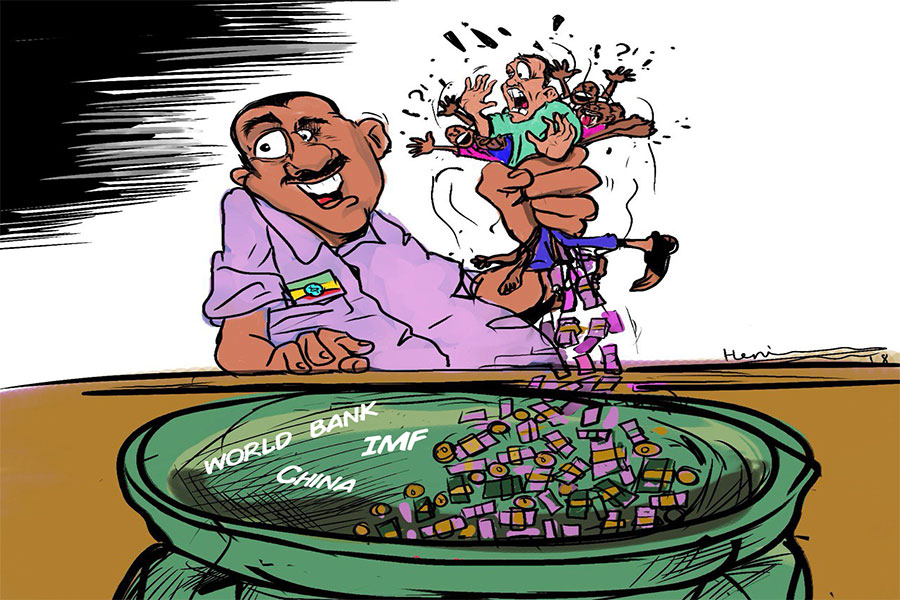
Photo Gallery | 180256 Views | May 06,2019
Oct 12 , 2025.
The Brewed Buck slipped again last week, exposing the quiet tension between official oversight and the underlying market forces that have shaped the foreign exchange scene for months.
Between October 6 and 11, 2025, commercial bank postings showed the average cash buying rate creeping upward by about 1.5 Br (1.05pc), ending the week at 143.5 Br to the dollar. Selling rates followed closely, reaching 146.3 Br.
While the movement appeared modest on the surface, it revealed widening cracks beneath, the kind of heavily managed forex regime cannot paper over indefinitely.
The most telling signals came from the top-tier private banks.
The Bank of Abyssinia (BoA) ended the week with the highest posted buying rate in the market, at 147.55 Br to the dollar, mere a hair under the Central Bank’s 147.71 Br rate. That quote stood nearly six Birr above Awash Bank’s and marked a dramatic rise from Abyssinia’s Monday rate of 142 Br. The move signals a break from the former alignment among the top private lenders.
The other members of the “Big Five” moved more cautiously.
Dashen closed at 143.55 Br, Zemen at 141.99 Br, and Wegagen at 142.97 Br, rates effectively in line with the week’s industrial midpoint. Oromia Bank, previously among the most aggressive dollar bidders through much of July to September, posted 144.88 Br, barely changed from the week before and trailing the Central Bank’s reference rate by nearly three Birr.
The spread between the week’s highest and lowest posted rates widened beyond eight Birr, a notable divergence, considering the Central Bank’s prescribed two-percent corridor between buying and selling rates. That divergence reveals the uneven pressures across the industry, such as imported inflation, maturing external debt, and dwindling foreign reserves.
Each day showed incremental movement. On Monday, the average posted buying rate began at 142 Br. Tuesday and Wednesday added slight gains to 142.5 Br. Thursday inched up again to 142.7 Br. But, Friday’s jump to 143.4 Br accounted for nearly half of the week’s entire depreciation, before the rate settled at 143.5 Br on Saturday.
Through it all, banks maintained the official two-percent spread, except, notably, the regulator.
The wide gap between the top and bottom quotes adds to a market already under strain. It raises fresh questions about whether the Central Bank can, or will, enforce its own corridor as dollar demand intensifies. A widening spread not only distorts price signals but also signals a weakening policy grip.
Even the state-run Commercial Bank of Ethiopia (CBE), typically a centrist force, showed signs of strain. Its posted buying rate rose by 0.75 Br to 140.89 Br, still near the 142.97 Br industry average. However, that figure underplays CBE’s true market posture.
CBE continued offering a 10 Br “top up” for remittances converted at the counter, a measure designed to steer hard currency into formal channels. The real payout for those transactions effectively sits closer to 150.9 Br, a shadow rate that blurs the line between published and actual prices.
Amhara Bank also flexed its position, finishing the week at 146.88 Br. The offer cemented its reputation for aggressive forex mobilisation, and brought it only behind Abyssinia Bank and the Central Bank in effective price setting.
By contrast, smaller third-generation banks, including Global Bank (139.42 Br), Cooperative Bank of Oromia (Coop Bank), and Siinqee Bank, made only token adjustments. Their lower rates showed tighter dollar obligations and conservative positioning rather than competition for forex market share.
The market now falls into three clear tiers.
At the top, Abyssinia and Amhara banks, as well as the Central Bank, lead with aggressive pricing, signalling either acute foreign currency needs or a desire to shape the market’s direction.
In the middle - Awash, Dashen, Wegagen, and Zemen - hover near the average, walking a line between caution and necessity. Below them sit the smaller lenders, some posting rates four or more Birr below the norm, revealing limited forex liabilities and a restrained appetite for foreign assets.
The Central Bank’s dual role, as both referee and market player, adds to the complexity. For a third straight week, it closed with the highest posted buying rate in the market. That position effectively sets the ceiling, pulling scarce dollars toward public-sector priorities like fuel imports, essential medicines, and debt service.
But by setting the price higher, the Central Bank reinforces the perception that a slow, controlled weakening of the Birr, the “managed glide”, is now the policy baseline.
The pressure beneath the surface is growing. The harvest season is approaching, raising demand for imported inputs. External debt negotiations remain unresolved, while foreign reserves remain low.
The modest weakening of the Brewed Buck last week may not signal calm. But, it may simply reflect volatility being kept in check by decree.
Bank of Abyssinia’s buying rate jumped 3.9pc in six days, nearly four times the industry average of 1.05pc. Amhara Bank climbed 1.3pc, staying close behind. Most smaller banks moved less than half a percent, sticking to a strategy of liquidity conservation and avoiding costly mismatches between their Birr obligations and dollar liabilities.
Awash Bank, still the largest in volume, appears content to stay near the midpoint, perhaps betting that its depositor base and correspondent banking relationships offer enough cushion.
In nominal terms, the Brewed Buck weakened by only about one percent last week, a pace well within the Central Bank’s tolerance band. But that headline average masks the real story. Bank of Abyssinia’s 147.55 Br rate, Amhara Bank’s 146.88 Br, and CBE’s effective 151 Br mean that those holding dollars can demand high premiums.
For anyone trying to buy dollars, the posted average may be misleading; actual costs are far higher.
Whether the Brewed Buck will continue its orderly descent remains an open question. As the spread between the top and bottom quotes stretches, arbitrage becomes more attractive. If several large banks were to match Abyssinia Bank’s rates simultaneously, the Central Bank’s two-percent rule could unravel quickly.
For now, the regulator appears committed to gradualism. Forex auctions remain infrequent, large spot movements are discouraged, and banks are still expected to stay within official corridors.
But last week’s developments offer a preview of what may come when pent-up demand finds a release valve. When even a single outlier bank breaks from the pack, it can reprice the entire market. If others follow, it may test not only the limits of the current corridor, but the credibility of the forex system itself.
PUBLISHED ON
Oct 12,2025 [ VOL
26 , NO
1328]

Photo Gallery | 180256 Views | May 06,2019

Photo Gallery | 170453 Views | Apr 26,2019

Photo Gallery | 161478 Views | Oct 06,2021

My Opinion | 137267 Views | Aug 14,2021

Nov 1 , 2025
The National Bank of Ethiopia (NBE) issued a statement two weeks ago that appeared to...

Oct 25 , 2025
The regulatory machinery is on overdrive. In only two years, no fewer than 35 new pro...

Oct 18 , 2025
The political establishment, notably the ruling party and its top brass, has become p...

Oct 11 , 2025
Ladislas Farago, a roving Associated Press (AP) correspondent, arrived in Ethiopia in...